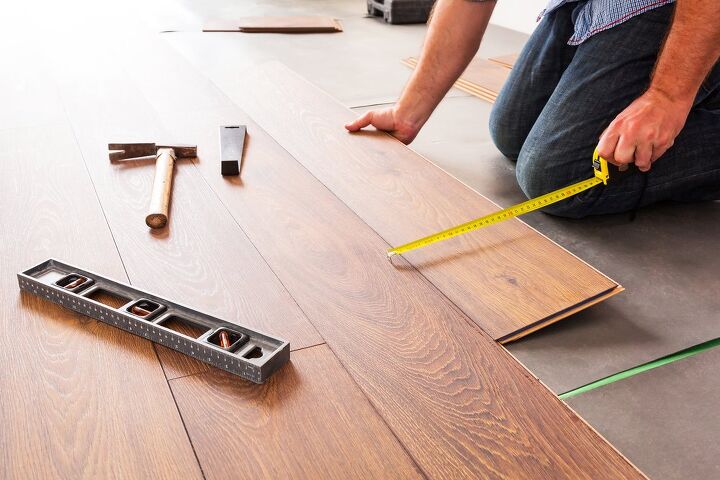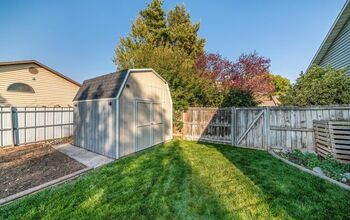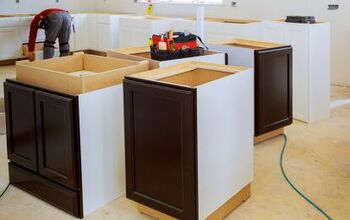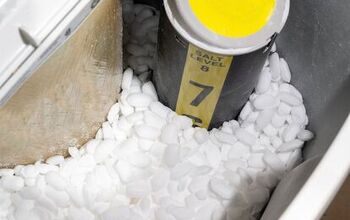How Long Does It Take To Install Laminate Flooring?

Laminate is a commonly used synthetic flooring option for homeowners. It’s popular among professionals as well as avid DIYers. But, how long does it take to install laminate flooring?
It will take approximately two days at most to finish a laminate flooring job in a 1,000-square-foot space. If it is a 300 to 500 square foot space, this will take you less than one day. However, keep in mind that kitchens, bathrooms, and stairs take longer due to the amount of cutting you will need to do.
In this article, we will talk about the amount of time it takes to lay laminate. This will help you understand how to better prepare your space for this type of undertaking. Let’s get to it!
How Many Square Feet of Laminate Can Be Laid in One Day?
The flooring can be installed in a room that is 10-by-20-foot in less than three hours, but you should add an extra hour. These extra hours allow you to accommodate the cabinets or other barriers in a bathroom or kitchen.
Simply multiplying this estimate by the number of similar rooms you’re covering should give you a good idea of the total time required. Professional installers can complete a 1,000-square-foot space in one or two days.
How Long Does it Take to Install 300 Square Feet of Laminate Flooring?
If you lay the laminate flooring yourself, you can finish a 200 or 300-square-foot bedroom in a day.
Once you’ve mastered the installation of laminate flooring, you should be able to finish two bedrooms per day.
On the other hand, professionals are pretty skilled at laying laminate flooring. They have the ability to cover up to 1000 square feet per day.
They can sometimes finish more than 1000 square feet rather than the entire living room and bedroom. The level of skill and experience determines the efficiency.
How Long Does it Take to Install Laminate Flooring in One Room?
The total time required to complete the task varies greatly. It considers the desired space, operational efficiency, and room size.
At least two to three days are required for acclimatization to the room environment. Most DIY homeowners need 3 – 4 hours to complete the flooring process.
As a first-time installer, you may require a little bit of extra time. It will most likely take another 1–2 hours to finish the doorway and cabinet spaces.
Consider a 10′ x 20′ room space as a starting point. The entire installation process could take 4 – 5 days. Each additional room will cost an extra day.
You can calculate the time required if you know how long it takes to install a laminate floor. It does not imply that you will have to put in a lot of effort.
There is no need to spend extra money on installing the laminate floor. The key factors here are careful laying and precise calculation.
Is Laminate Flooring Easy to Install?
The process of installing laminate flooring is considered to be of intermediate difficulty.
However, professional homeowners find that installing laminate flooring is simple. If you want to install laminate flooring yourself, it will take a few hours. Also, you must use the proper equipment for a stable and reliable installation.
Making sure that you have the proper tools and equipment will make the installation process much easier.
Can You Put Laminate On Top of Existing Flooring?
Installing new laminate flooring over old laminate flooring is not recommended. Because laminate is a floating floor, each layer expands and contracts differently, potentially causing problems in the future.
If you go this route, make sure the aged laminate is well before beginning the installation. Of course, new laminate floors can be installed over an existing layer.
However, this does not imply that it is a good idea for several reasons, including:
Moisture
When laminate floors are layered on top of each other, moisture can become trapped between the layers.
Moisture retention can cause serious problems, such as mold and rot growth. These can cause not only floor damage but also uneven floors.
Plank Movement
Because they are floating floors, laminate slabs and tiles are not glued together but are closely fit around each other side by side during installation.
While this simplifies installation, it also means that they will expand and contract with the weather.
Tension is created in your flooring by introducing a new layer of laminate tiles as well as planks over the existing floor. This tension occurs because the two layers flex against one another, causing friction.
Friction can cause significant wear and tear on the joints in your laminate floors. Some floors also might track and then become damaged, significantly reducing the laminate’s lifespan.
Effect On the Rest of the Space
Adding an additional flooring layer means your floors will be larger than before. As a result, the doors in the room frequently become stuck against the pieces of wood, forcing you to cut them.
Trimming the doors requires a substantial amount of time and effort. Furthermore, if you decide to disassemble and reinstall your floors completely, the trimmed door openings may cause problems.
To avoid these issues, consider covering the original laminate floor with a bonding agent and a thin laminate sheet rather than trying to install an entirely new floor. A laminate sheet is also the most reliable and cost-effective of the two options.
However, we tend to reserve this technique for laminate countertops, and you may have difficulty finding a large enough laminate sheet.
Instead, if a tiny region of your laminate floors wears out, you can use this process to avoid having to relay the floor to achieve an even look.
How Soon Can You Walk on Laminate Flooring?
Make sure the floor is successfully treated before using it. Do not walk on the floor for the first 24 hours after installation.
This can cause the floor to shift and become uneven if you do. This is extremely difficult to fix and most likely results in a complete redo.
Do You Have to Leave Laminate Flooring Overnight?
Even though it appears solid, all wood, along with HDF, is absorbent on a microscopic level. These miniature openings allow air to enter the core, carrying any humidity with it.
The higher the humidity, the more likely the pieces of wood will swell; the lower the humidity, the more likely the planks will decrease.
While the swelling or shrinking may be minor, it may be sufficient to cause otherwise tight latching systems to buckle or gap all across the floor.
Acclimating enables the planks to become integrated into the current temperature and humidity conditions.
The slats will be evenly conditioned once acclimated, and the latching system will not be compromised.
As you can see, acclimation is critical. In fact, failing to follow the proper acclimation procedure will void your warranty.
Can I Use Carpet Underlay For Laminate Flooring?
When tearing up flooring, you must start by removing everything all the way down to the subfloor. Carpet underlayment cannot be used beneath laminate flooring.
Even if you want to save money on a new floor, that’s not the way to go. In the long run, putting laminate flooring over carpet underlayment will cause more harm than good.
Simply put, the carpet underlayment is just too thick. The majority of laminate flooring underlayment ranges in thickness from 1mm to 3mm.
Most carpet underlayments are 8mm to 10mm thick, which is far too thick for laminate flooring installations. You may now believe that more cushion equals a “softer” floor. This is also incorrect.
If you reuse your thick carpet padding, your floor will be too bouncy, and the locking system may be damaged. When installing underlayment, pay close attention to the warranty. If you do not follow their instructions, your warranty may be voided.
Can Laminate Be Installed Directly Over Concrete?
Your laminate wood floor must be dry, level, and clean for long-term performance. These are the difficulties. Let’s begin with the moisture issue.
Protecting Laminate Flooring from Moisture
Because concrete is tough, many homeowners believe it is impenetrable. The truth is that moisture vapor easily needs to pass through a concrete slab.
- Make sure if it’s new cement, you let it cure for at least 30 days: Whether it’s a basement slab, self-leveling concrete with radiant floor heating, or another concrete setup. The material must be given enough time to dry out.
- Check the humidity level of basement slab concrete: After the concrete has cured, use a moisture meter to measure humidity. If it is 4.5 percent or higher, the slab may be unsuitable for laminate, even with a vapor barrier.
Check the Moisture Tolerance Requirements
If you don’t have a meter, cut a 2’x2′ square of plastic and tape it to the floor, making sure all four sides are sealed.
If moisture accumulates beneath the plastic after 2-3 days, the environment is unsuitable for laminate flooring.
We should also mention that if your cellar is flood-prone, laminate is one of the worst flooring options.
How Level Does Concrete Have to be to Install Laminate?
When you throw laminate on an uneven floor, twisting and buckling can occur. As the panels settle, they may start to come loose.
Furthermore, due to improper installation, the lockable system that keeps the laminate boards together can be destroyed or broken.
An uneven floor can also cause a noisy surface. The surface was probably uneven if you’ve ever started walking across a floor that groans, keeps popping, and knocks when you step on it. Air pockets cause noise in the compartments left under the flooring.

Heather is a passionate writer who loves anything DIY. Growing up, she learned everything from home repairs to design, and wants to share her tips with you. When she's not writing, she's usually hiking or searching for her next DIY project.
More by Heather Robbins






























